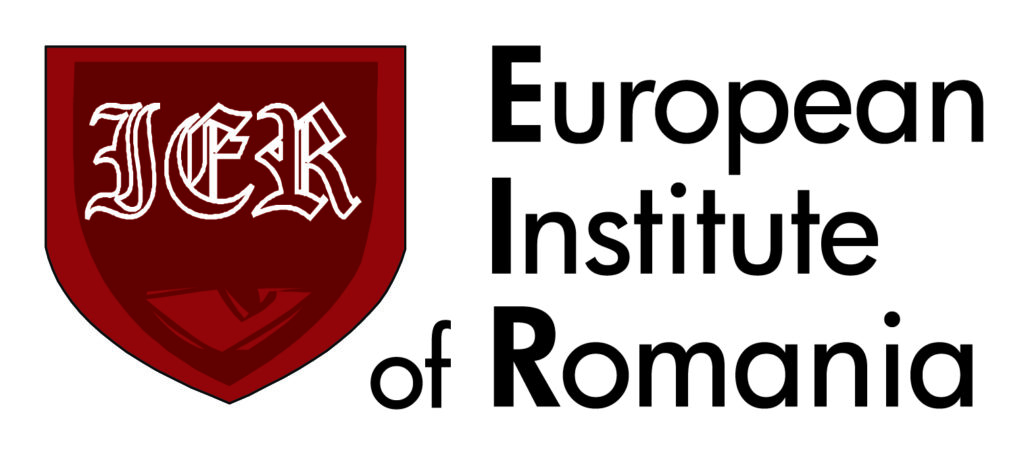About authors:
Claire Lin is currently an Associate Engineer at Taiwan Instrument Research Institute, NARLabs, Taiwan. Her research focuses on China Studies, Non-traditional Security and Southeast Asian Studies.
Chong-Lun Wei received his Ph.D. in the Department of Materials Science and Engineering from National Yang Ming Chiao Tung University. He is currently an Assistant Engineer at Taiwan Instrument Research Institute, NARLabs, Taiwan.
Vincent Hsiao received his Ph.D. in the Department of Mechatronics Engineering, from National Changhua University of Education. He is currently a Research Fellow at Taiwan Instrument Research Institute, NARLabs, Taiwan.
Key takeways:
- BYD, a Chinese electric vehicle (EV) manufacturer, surpassed Tesla in EV sales in the fourth quarter of 2023, selling approximately 530,000 units compared to Tesla’s 485,000. Despite this, Tesla maintained the overall sales lead for the entirety of 2023.
- The lithium-ion battery pack is a significant component in EVs, accounting for up to 50% of the vehicle’s value. The EV supply chain includes upstream (supply of raw materials and components), midstream (vehicle manufacturing), and downstream (charging and after-market services) stages.
- China holds a significant position in the EV supply chain, particularly in the upstream and midstream stages. The country accounts for 75% of global lithium-ion battery production and 70% of cathode capacity, influencing both the cost and weight of EVs. China’s support of its automotive manufacturing industry has been pivotal to its success in the global EV market.
- BYD’s strategy involves developing a vertically integrated supply chain, extending from mining and battery production to car manufacturing and shipping. This approach has enabled BYD to produce EVs at competitive prices and become one of the world’s largest manufacturers of lithium batteries.
- The EV sector in China has benefited significantly from government support, including subsidies and tax breaks. China’s welcoming of foreign companies like Tesla, through favorable policies and support, reflects its strategy to enhance local EV technology and production capabilities. The EV industry is critical for energy security, with China’s dominance in mineral refining and processing, and global efforts are underway to innovate in battery technology and reduce dependence on specific minerals.
In the fourth quarter of 2023, Chinese electric vehicle (EV) maker BYD surpassed U.S. company Tesla to become the world’s biggest seller of EVs, with about 530,000 units sold, outdoing Tesla’s 485,000. [1] This marks a significant milestone as the two companies vie for the top spot in the sector. Meanwhile, Chinese shopping apps like Shein and Temu are making inroads into Amazon’s domain by bringing made-in-China goods directly to overseas consumers, further strengthening China’s position as a formidable global export power. The growing economic and cultural influence of China abroad has begun to challenge the Western developmental model and liberal ideals. This is epitomized by the ‘China Model’ or ‘Beijing Consensus,’ [2], which prioritizes economic needs and political stability over political participation, freedom, and rights, presenting a stark contrast to Western liberal values. The expanding global reach of China’s digital authoritarianism poses a significant threat to global freedoms. Despite BYD’s recent success, Tesla maintained the lead in total sales for the entirety of 2023. The question remains: will BYD ultimately become the leader in the EV industry? Additionally, are there notable developments in the EV sector in other countries?
The lithium-ion battery pack alone can account for up to 50% of the value of today’s EVs.
The supply chain of electric vehicles can be categorized into three main stages: upstream, midstream, and downstream. The upstream sector is concerned with the supply of raw materials and components essential for vehicle manufacturing.[3] This includes the extraction of minerals such as lithium and cobalt, as well as the production of key parts like power batteries, drive motors, and electronic control systems. The midstream sector encompasses the vehicle manufacturing process. On the other hand, the downstream segment of the EV supply chain involves services related to charging and post-sale support. This covers charging infrastructure and equipment, as well as automobile finance, insurance, trading, repair and maintenance services, and finally, the dismantling and recycling of vehicles.
China currently has a dominant role in the supply chains for EVs, particularly in the upstream and midstream stages. The country accounts for 75 percent of the global lithium-ion battery production and 70 percent of cathode capacity. Batteries constitute approximately 20-25% of an EV’s overall weight[4] and up to 40-60% of its cost.[5]
By 2030, it is expected that batteries will represent about 19 percent of the total cost for large electric vehicles.[6] China is not only the leading refiner of battery metals globally but also hosts a significant portion of battery cell manufacturing capacity, including the production of anodes and electrolytes, as well as other battery components. Moreover, China plays a major role in the vehicle manufacturing process.[7] The rapid growth of China’s automotive manufacturing industry has been bolstered by supportive government policies and investments, establishing the country as a key player in the global EV market.
China’s BYD overtakes Tesla’s EVs sales in last quarter of 2023.
China has warmly welcomed Tesla, marking a significant milestone as Tesla becomes the first foreign car manufacturer allowed to fully own its facility in China. Prior to this, foreign car manufacturers had to engage in joint ventures with local partners. Additionally, China facilitated the financing for the construction of Tesla’s Shanghai Gigafactory 3 and made a special effort to include the Gigafactory’s location in the Shanghai free trade zone. This inclusion offers a range of benefits, including tax incentives and exemptions from import duties.[8] This arrangement appears to be a win-win situation: China gains access to cutting-edge EV technology, while Tesla is able to produce more cost-effectively. In fact, China views EV technology as a means to effectively compete with Western countries and Japan in the traditional internal combustion engine (ICE) car market. By inviting Tesla, a leader in EV technology, China aims to enhance the quality, technology, and production capabilities of its local EV makers. The competition posed by Tesla is expected to drive these local manufacturers to improve and innovate in order to remain competitive.
The EV sector in China has greatly benefited from government support, particularly in its early stages. Since 2009, the government has been subsidizing producers of EVs for public transport, taxis, and the consumer market. To help lower production costs for EVs and fuel cell vehicles, China has implemented exemptions from consumption tax. Simultaneously, consumers have been encouraged through purchase subsidies and exemptions from vehicle purchase tax. Additionally, car owners are exempt from vehicle and vessel tax and benefit from infrastructural support aimed at optimizing conditions for EV usage. Furthermore, EV consumers in China have been receiving purchase subsidies from the government for several years. From 2009 to 2022, more than US $28 billion was spent in China on EV subsidies and tax breaks.[9]
As BYD continues to develop its vertically integrated supply chain, encompassing everything from mining and batteries to car manufacturing and shipping, it aims to further reduce production costs and increase profit margins. This Chinese company has been able to manufacture EVs at competitive prices due to its control over the entire supply chain. Notably, it’s one of the world’s largest manufacturers of lithium batteries—a critical component for electric vehicles—and even supplies these to its competitors, including Tesla. Like other EV manufacturers in China, BYD has also benefited from a decade of government subsidies, as part of the nation’s initiative to phase out gasoline cars and establish leadership in renewable energy.
After BYD engaged in steep year-end discounting to meet its 2023 sales goals, the company saw a negative impact on its earnings, leading to a slump in its shares. Despite achieving record deliveries in the fourth quarter and surpassing Tesla as the world’s top seller of EVs, these accomplishments did not translate into substantial profits. According to Bloomberg’s calculations, BYD’s fourth-quarter net income is expected to be between 7.2 billion yuan and 9.2 billion yuan, a decrease from the 10.9 billion yuan reported in the previous quarter.[10]
US must lead the way and mobilize his partners rapidly pursue a strategic critical technology step-up.
BYD’s range of low-cost EV models has attracted a large number of price-sensitive consumers, leading some to refer to it as the ‘Toyota of the EV era.’ However, BYD’s project in the U.S. faced challenges due to the Biden administration’s Inflation Reduction Act (IRA). This legislation, which sets rules on sourcing battery materials and disqualifies EVs not produced in North America from receiving a $7,500 purchase rebate, is partly aimed at boosting domestic EV manufacturing through tax incentives and funding. As a result, operating in the US passenger car market has become prohibitively expensive and unappealing for BYD.
Crucially, for energy security, China’s dominance in mineral supply chains lies not in possessing the resources but in refining and processing minerals mined elsewhere. China is responsible for about 60 to 90 percent of the refining and processing of most minerals.
However, this manufacturing activity can be conducted in a wide range of locations globally. The same principle applies to the batteries that contain these minerals, which are currently predominantly manufactured in China. This is increasingly becoming the case for electric cars as well.[11] Energy storage represents a technological challenge that can greatly benefit from innovative solutions. Instead of relying on increasing quantities of minerals, technological advancements can minimize the types and amounts of metals and other minerals required for batteries. These innovations have the potential to replace lithium and copper with alternative materials, thus reducing dependence on these specific resources.
Innovation is a complex process that can’t be simply willed into existence. Despite Beijing’s massive investment in research and development, China’s innovation track record is mixed. In the most recent Global Innovation Index rankings[12]—a widely recognized measure of countries’ innovation capacities—China did not make it into the top 10. Australian research indicates that China leads in 37 out of 44 critical technologies, based on international research output. However, the United States holds a leading position in the majority of these technologies, specifically excelling in high-performance computing, quantum computing, and vaccines.[13] Yet, there is a prevailing view that Chinese entities primarily gain economic advantage by imitating and refining Western technology, rather than making groundbreaking innovations. This situation should serve as a wake-up call for democratic nations to rapidly enhance their strategic efforts in critical technological fields.
What can Taiwan or other countries do?
Taiwan lacks natural resources such as minerals or petrochemical energy. However, it can capitalize on the emerging wave of new energy types by leveraging its strengths in research and development, as well as its pool of talented professionals.
Despite facing the challenge of a small domestic market, Taiwan has the potential to become a key intermediary, offering a range of diverse and innovative battery core manufacturing solutions to the international market.[14] Becoming a global research and manufacturing center for key materials in new energy and advanced components for high-end equipment is the main goal of Taiwan.
In the realm of new energy batteries, lithium batteries, which commonly use liquid electrolytes, are prone to leakage and combustion issues. Therefore, replacing liquid electrolytes with inorganic solid electrolytes can significantly enhance battery safety. Prologium Co., Ltd., a pioneering company in Taiwan, has been at the forefront of developing solid-state batteries. Initially focusing on batteries for consumer electronics, Prologium has recently ventured into the development of power batteries, introducing solid-state versions based on ceramic solid electrolytes. In 2023, Prologium Co., Ltd. announced its plans to invest €5.2 billion (approximately NTD 174.3 billion) in constructing a factory in Dunkirk, France.[15] This facility, set to be Prologium’s first overseas solid-state battery ‘super factory’, aims to establish a 48 GWh production capacity and is scheduled to launch by the end of 2026. The super factory will focus on localized material procurement, research and development, and manufacturing. With these significant developments, Prologium Co., Ltd. is certainly emerging as a standout in Taiwan’s new energy sector.
In terms of developing hydrogen energy, the National Development Council in Taiwan has unveiled the ‘Taiwan 2050 Net Zero Carbon Emission Roadmap’, which identifies hydrogen energy as a distinct strategic element and sets specific execution goals.[16] This move indicates the Taiwanese government’s increasing recognition of hydrogen energy as a vital option for the future. Taiwan has already developed a comprehensive suite of technologies spanning the upstream, midstream, and downstream segments of the fuel cell industry and has secured key technology patents. However, due to the lack of natural resources and the relatively high cost of hydrogen production compared to other countries, Taiwan faces challenges in the large-scale application of hydrogen energy. Consequently, it is crucial for Taiwan to investigate alternative, economically feasible sources of hydrogen.[17]
EVs hang in the balance
EVs are beneficial for the environment as they generate significantly less air and climate pollution compared to gasoline-powered vehicles. This advantage holds even though a substantial portion of our electric grid currently relies on fossil fuels. As the grid becomes cleaner, with an increasing share of renewable energy sources, electric vehicles will become even more environmentally friendly.
The high level of vertical integration in BYD’s battery supply chain grants it a distinct cost advantage over other carmakers, facilitating rapid expansion both within and outside China. Unlike many of its rivals, BYD is largely self-sufficient in meeting its battery and EV systems requirements. It partially sources key battery materials from its own mines in China and manufactures its batteries and semiconductors in-house. This includes the production of power-management chips, which are crucial for EVs. With the exception of windshields and tires, BYD is capable of producing nearly every component in their cars. They even have their own construction company to expedite factory building. This comprehensive control over the supply chain places BYD in a stronger position than Tesla in the EV era.
Geopolitical tensions are having a significant impact. The European Commission has selected BYD, along with two other carmakers, for an anti-subsidy investigation to determine if state support from the Chinese government has provided them with an unfair competitive advantage. In response to these challenges, BYD is constructing an assembly plant in Hungary, marking the first such facility by a Chinese carmaker in Europe. Additionally, under the 2022 TRA, EVs assembled in Mexico are eligible for a US consumer tax credit of up to $7,500, leading Chinese auto-parts makers to rapidly establish plants near Monterrey, Mexico. Meanwhile, the Biden administration is contemplating restrictions on imports of Chinese ‘smart cars’ and related components, potentially going beyond the existing tariffs set by the TRA. The journey to make EVs mainstream is a marathon, not a sprint. While Tesla and BYD haven’t yet won the EV race, they are significantly ahead of other competitors.
Photo: pexels.com
Bibliography
[1] BYD Overtakes Tesla, With Other Chinese EV Makers Close Behind https://www.forbes.com/sites/neilwinton/2024/01/03/byd-overtakes-tesla-with-other-chinese-ev-makers-close-behind/?sh=311ac22a6772
[2] Cooper Ramo Joshua, The Beijing Consensus (London: Foreign Policy Centre, 2004).
[3] China’s Electric Vehicle Supply Chain and Its Future Prospects
https://www.china-briefing.com/news/chinas-electric-vehicle-supply-chain-and-its-future-prospects/
[4] How Much Do Electric Car Batteries Weigh? (Explained) https://motorandwheels.com/electric-car-batteries-weight/
[5] Cost of minerals vital for electric vehicle batteries soars https://www.fleetnews.co.uk/news/latest-fleet-news/electric-fleet-news/2022/12/28/cost-of-minerals-vital-for-electric-vehicle-batteries-soars.
[6] Projected battery costs as a share of large battery electric vehicle costs from 2016 to 2030
https://www.statista.com/statistics/797638/battery-share-of-large-electric-vehicle-cost/
[7] China’s Electric Vehicle Supply Chain and Its Future Prospects
https://www.china-briefing.com/news/chinas-electric-vehicle-supply-chain-and-its-future-prospects/
[8] Shanghai Free-Trade Zone: Tesla opens first factory independently owned by foreign firm in China https://news.cgtn.com/news/7a6b444e35454464776c6d636a4e6e62684a4856/share_p.html
[9] Life after subsidies for China’s EVs https://chinadialogue.net/en/business/life-after-subsidies-for-chinas-evs/
[10] BYD Preliminary Net Income Rises Up to 87% But Misses Estimates
https://www.bnnbloomberg.ca/byd-preliminary-net-income-rises-up-to-87-but-misses-estimates-1.2027752
[11] Brian Deese, Jason Bordoff, 2023/10/04, “How to Break China’s Hold on Batteries and Critical Minerals”, Foreign Policy. https://foreignpolicy.com/2023/10/04/ev-electric-china-us-batteries-critical-minerals-energy-oil-renewable/
[12] Global Innovation Index 2023 https://www.wipo.int/global_innovation_index/en/2023/
[13] ASPI’s Critical Technology Tracker – Sensors & Biotech updates https://www.aspi.org.au/report/critical-technology-tracker
[14] 投資教戰 電池、儲能未來商機爆發 名家分享12檔「來電」好股https://www.businesstoday.com.tw/article/category/183012/post/202202230029/
[15] 台灣輝能獨步全球量產固態鋰電池,馬克宏力邀布局法國電動車供應鏈 https://www.thenewslens.com/article/185417
[16] 臺灣2050淨零排放
https://www.ey.gov.tw/Page/5A8A0CB5B41DA11E/7a65a06e-3f71-4c68-b368-85549fbca5d1
[17] 迎接全球氫經濟,臺灣正積極發展氫能新應用 https://scitechvista.nat.gov.tw/Article/C000003/detail?ID=dec6a9e2-7f99-4f19-9639-41ccd77161f8

































Comments are closed.